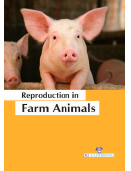Animal and Veterinary Science

Animal husbandry practices have varied widely across cultures and time periods. These practices increase yield of the various commercial outputs, but have led to increased concerns about animal welfare and environmental impact. Half a century ago, family farms were prevalent. Animals grazed on pasture, breathing fresh air, and feeling sunshine on their backs. During inclement weather, they were sheltered in straw-bedded barns. In contrast, the rearing of farm animals today is dominated by industrialized facilities that maximize pro ts by treating animals not as sentient creatures, but as production units. Raised by the thousands at a single site, animals are con ned in such tight quarters that they can scarcely move, let alone behave normally. Such production creates what appear to be "cheap" meat, eggs, and dairy products. But what at the cash register seems inexpensive in fact costs dearly to farm animals, the environment, rural and traditional farming, human health, and food quality and safety. A good understanding of anatomy and physiology of both the male and female is helpful in successfully managing reproduction. The techniques in animal production provide many options to help modern farmers accomplish their management goals.